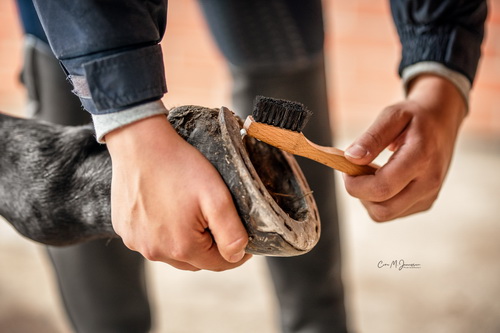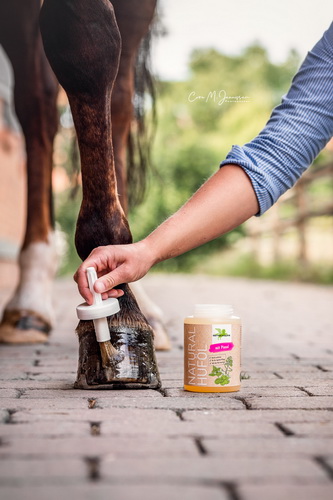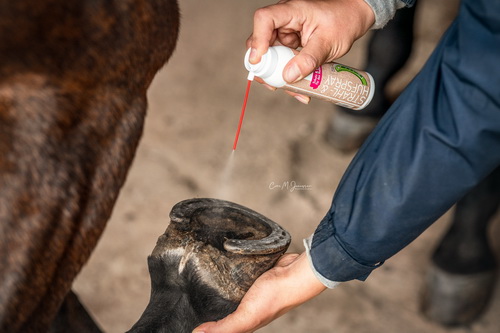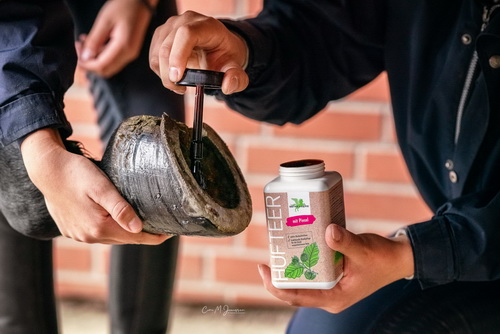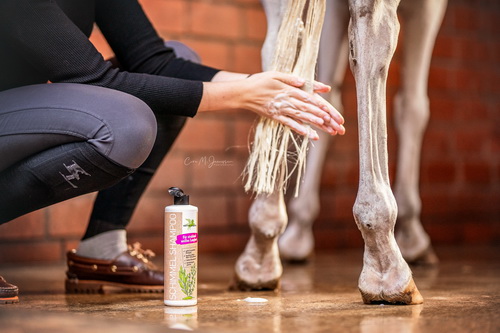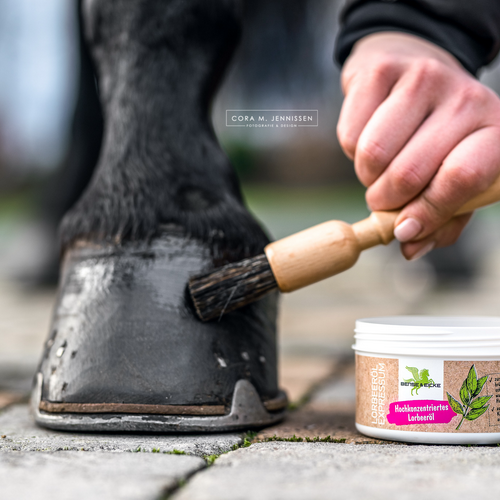
The right hoof care + how to avoid mud fever
A healthy hoof requires the right combination of nutrition, care and bedding management.
How to keep your four-legged friend's hooves elastic, resilient and healthy:
- feed a good quality feed rich in minerals,
- the hooves should be cleaned each day when leaving (and entering) the stable,
- the bedding should always be dry,
- avoid permanent standing on "mud paddocks" and wet, muddy meadows.
Which care products for which hoof?
1) Regular care for healthy hooves
For regular hoof care to keep the hoof elastic and resilient, hoof ointment or hoof oil is particularly suitable. The moisture balance of the hoof is regulated and the horn stability is promoted.
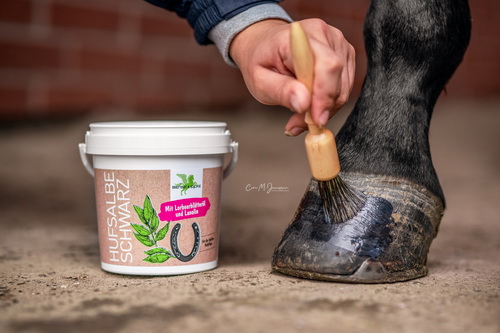
If you prefer 100% purely natural products, Natural Hoof Oil or Natural Hoof Cream is the best choice. The nourishing oils (such as rapeseed oil, castor oil, avocado oil, jojoba oil, almond oil) support the hoof horn and the antibacterial oregano oil protects at the same time.
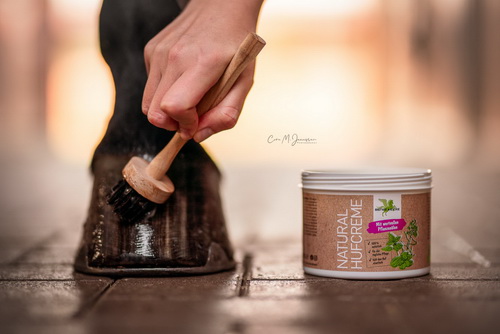
2) Brittle, dry, cracked hooves or tough hooves
We always recommend a blood test and a good mineral feed, and then a course of treatment with Natural Hoof Oil.
Week 1: daily oiling,
Week 2: depending on the condition of the hooves, oiling can be adjusted to 4x a week.
Week 3 and 4: oiling 3 times a week, then as needed.
Tip: oil hooves when they are freshly cleaned.
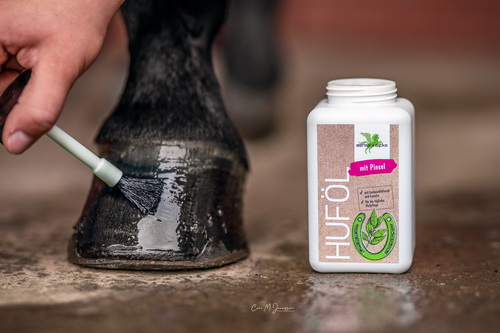
3) Preventive care of the hoof frog
To prevent frog rotting and keep the hoof frog elastic and maintained, we recommend applying a frog and hoof spray after each trimming and additionally 1-2 times a week as needed. It puts a protective layer over the frog and sole and protects against bacteria.
Genuine beech wood tar also helps preventing frog problems. It protects against moisture, dirt and bacteria.
4) Poorly growing hooves
For poorly growing hooves we recommend a good mineral feed and/or a special hoof supplement rich in biotin - sometimes it makes sense to feed both at the same time. In principle, a blood test is also advantageous here.
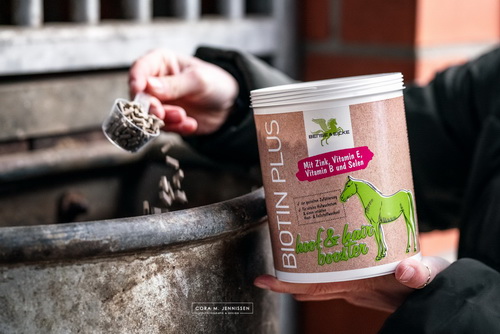
+1: How to avoid mud fever
Mud fever is a bacterial inflammation of the skin, typically in the pastern area (but can also move to higher parts of the leg).
This illness can be caused by wet conditions (muddy paddock and/or urinated bedding), but also by mites, bacteria, wrong horse care or weakened immune system.
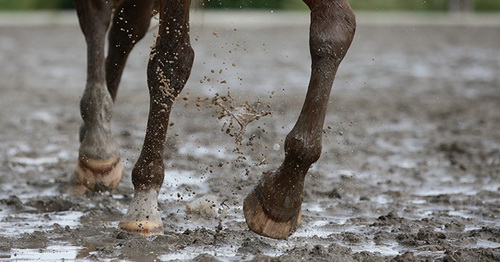
Symptoms of mud fever: swollen legs (inflammation of connective tissue), bruised or cracked skin, hair loss. This can be very painful und may lead to lameness.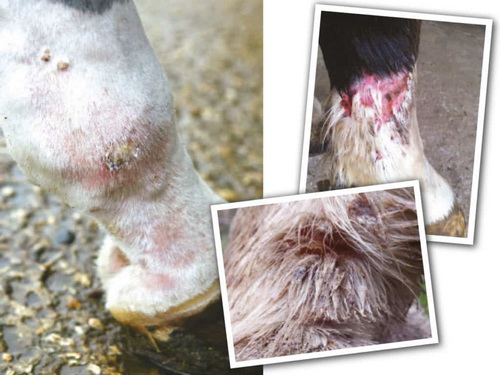
Horse breeds with long hair on their legs (e.g. Frisians) are more likely to get mud fever, since it's difficult to clean and dry their legs under the long fur (so called "feathers"). Because of this, it is better to cut these feathers.
As prevention, take these steps into consideration:
- the horse should spend no time or as little as possible in muddy conditions,
- it is worth spreading sand onto muddy parts of the paddock,
- the horse should get back to the stable with clean & dry legs, where the bedding is also clean and dry,
- carefully cut the feathers (leg hairs) around the pastern area,
- from time to time wash the legs with desinfecting-drying tea-tree-oil shampoo, this also relieves itching,
- do not put bandages on the horse's legs, because it only provides a warm and wet (=ideal) environment for bacteria and funghi
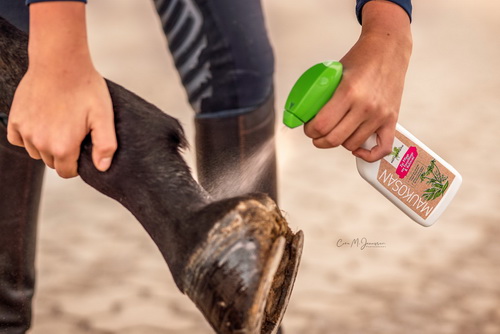
When mud fever has already appeared, call a professional vet for further advice.
Start the treatment with desinfecting the infected area, then dry the legs with a clean towel or cloth.
Afterwards, apply a thin layer of antibacterial and skin supporting balm on the appropriate body part. For this purpose, we recommend Leovet's Silver Balm or Foran's M.R.S. cream. These products stop bacteria spreading, reduce inflammation and recover the skin. Apply these regularly, even several times a day.
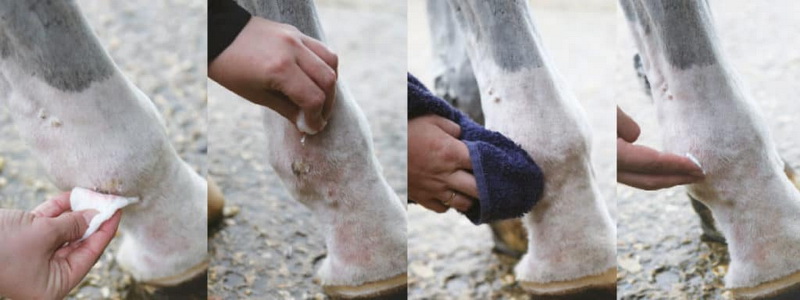
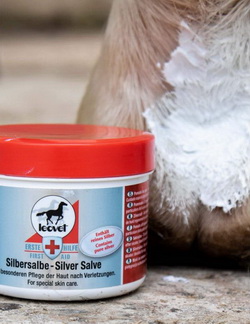
It is very important not to cover the horse's legs with any cloth or bandage!
Leave the problematic skin area free and let it breathe. Parallel to this, it is advised to give your horse's immune system a boost with a good quality multi-vitamin.
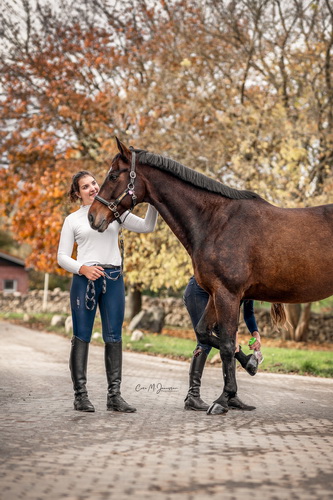
Thank you Bense&Eicke for the useful tips and photos!

